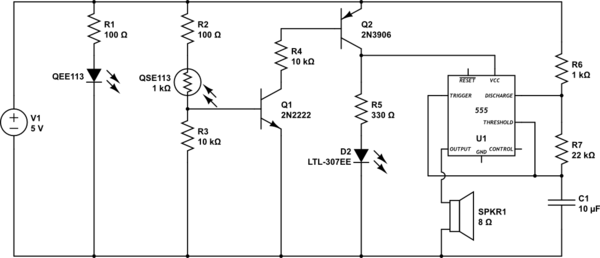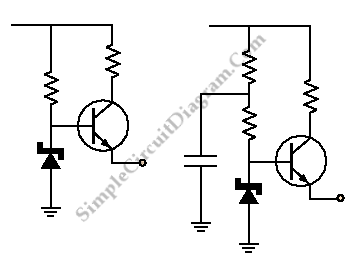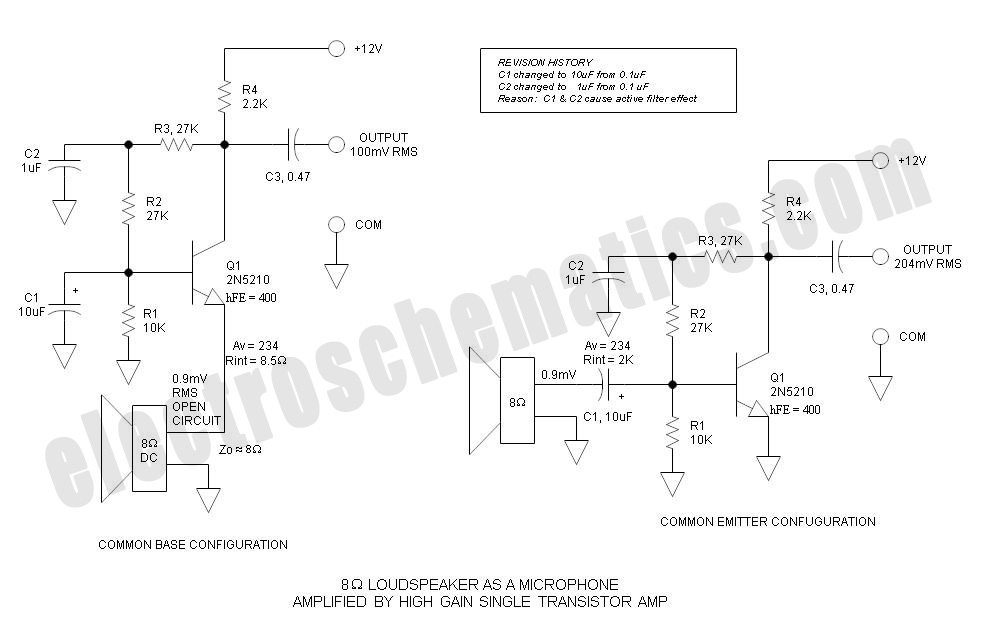
voltage transistor loop to limit the current

The second transistor (T2) is activated by the current passing through the resistor (R1). When a DALI slave unit is connected, this current matches the current flowing through the power transistor (T1). The resistor's value is selected so that when the current surpasses 250 mA, the voltage across the resistor triggers the opening of transistor (T2), which subsequently closes the power transistor (T1). This mechanism ensures that the current is limited to a maximum of 250 mA. The resistor R1, valued at 2.7 ohms, plays a crucial role in this design, where the signal is transmitted as 12V (logic high) and 0V (logic low).
The circuit utilizes two transistors, T1 and T2, to regulate the current flowing through a load, ensuring that it does not exceed a predefined limit of 250 mA. Transistor T1 acts as the primary power switch, while T2 serves as a control switch that responds to the voltage developed across resistor R1.
Resistor R1 is strategically placed in series with the load and is responsible for sensing the current. The relationship between the current flowing through R1 and the voltage across it is defined by Ohm's law (V = I × R). With R1 set to 2.7 ohms, the voltage drop across the resistor when the current reaches 250 mA can be calculated as follows:
V = I × R = 0.250 A × 2.7 Ω = 0.675 V.
This voltage drop is sufficient to turn on transistor T2, which is configured in a way that its base is connected to the junction of R1 and the load. When T2 is activated, it effectively pulls the base of T1 low, turning T1 off and thus limiting the current to the load.
The DALI (Digital Addressable Lighting Interface) slave unit's connection ensures that the current through R1 reflects the operational state of the entire circuit. As the current approaches the threshold of 250 mA, the design guarantees that T2 will activate, thereby protecting the circuit from excessive current that could lead to damage or failure.
The logic levels of 12V for high and 0V for low in this design indicate the operational states of the control signals, allowing for digital communication within the circuit. This setup is essential for applications in lighting control systems where precise current regulation is necessary to maintain the integrity and functionality of the connected devices.The other transistor (T2) is controlled by the current flowing through the resistor (R1). If a DALI slave unit is connected, this current will be the same as that flowing through the power transistor. The value of the resistor is chosen in such a way that when the current exceeds 250 mA the voltage level across the resistor will open the transisto
r (T2) which in its turn closes the power transistor (T1). In this way the current is maximized to 250 mA. Could anyone explain me how does the resistor R1 (in the first picture) value 2. 7 ohm opens the transistor when the current exceeds 250mA On that design, the signal is transmitted as 12V (logic high) and 0V (logic low). 🔗 External reference
The circuit utilizes two transistors, T1 and T2, to regulate the current flowing through a load, ensuring that it does not exceed a predefined limit of 250 mA. Transistor T1 acts as the primary power switch, while T2 serves as a control switch that responds to the voltage developed across resistor R1.
Resistor R1 is strategically placed in series with the load and is responsible for sensing the current. The relationship between the current flowing through R1 and the voltage across it is defined by Ohm's law (V = I × R). With R1 set to 2.7 ohms, the voltage drop across the resistor when the current reaches 250 mA can be calculated as follows:
V = I × R = 0.250 A × 2.7 Ω = 0.675 V.
This voltage drop is sufficient to turn on transistor T2, which is configured in a way that its base is connected to the junction of R1 and the load. When T2 is activated, it effectively pulls the base of T1 low, turning T1 off and thus limiting the current to the load.
The DALI (Digital Addressable Lighting Interface) slave unit's connection ensures that the current through R1 reflects the operational state of the entire circuit. As the current approaches the threshold of 250 mA, the design guarantees that T2 will activate, thereby protecting the circuit from excessive current that could lead to damage or failure.
The logic levels of 12V for high and 0V for low in this design indicate the operational states of the control signals, allowing for digital communication within the circuit. This setup is essential for applications in lighting control systems where precise current regulation is necessary to maintain the integrity and functionality of the connected devices.The other transistor (T2) is controlled by the current flowing through the resistor (R1). If a DALI slave unit is connected, this current will be the same as that flowing through the power transistor. The value of the resistor is chosen in such a way that when the current exceeds 250 mA the voltage level across the resistor will open the transisto
r (T2) which in its turn closes the power transistor (T1). In this way the current is maximized to 250 mA. Could anyone explain me how does the resistor R1 (in the first picture) value 2. 7 ohm opens the transistor when the current exceeds 250mA On that design, the signal is transmitted as 12V (logic high) and 0V (logic low). 🔗 External reference





